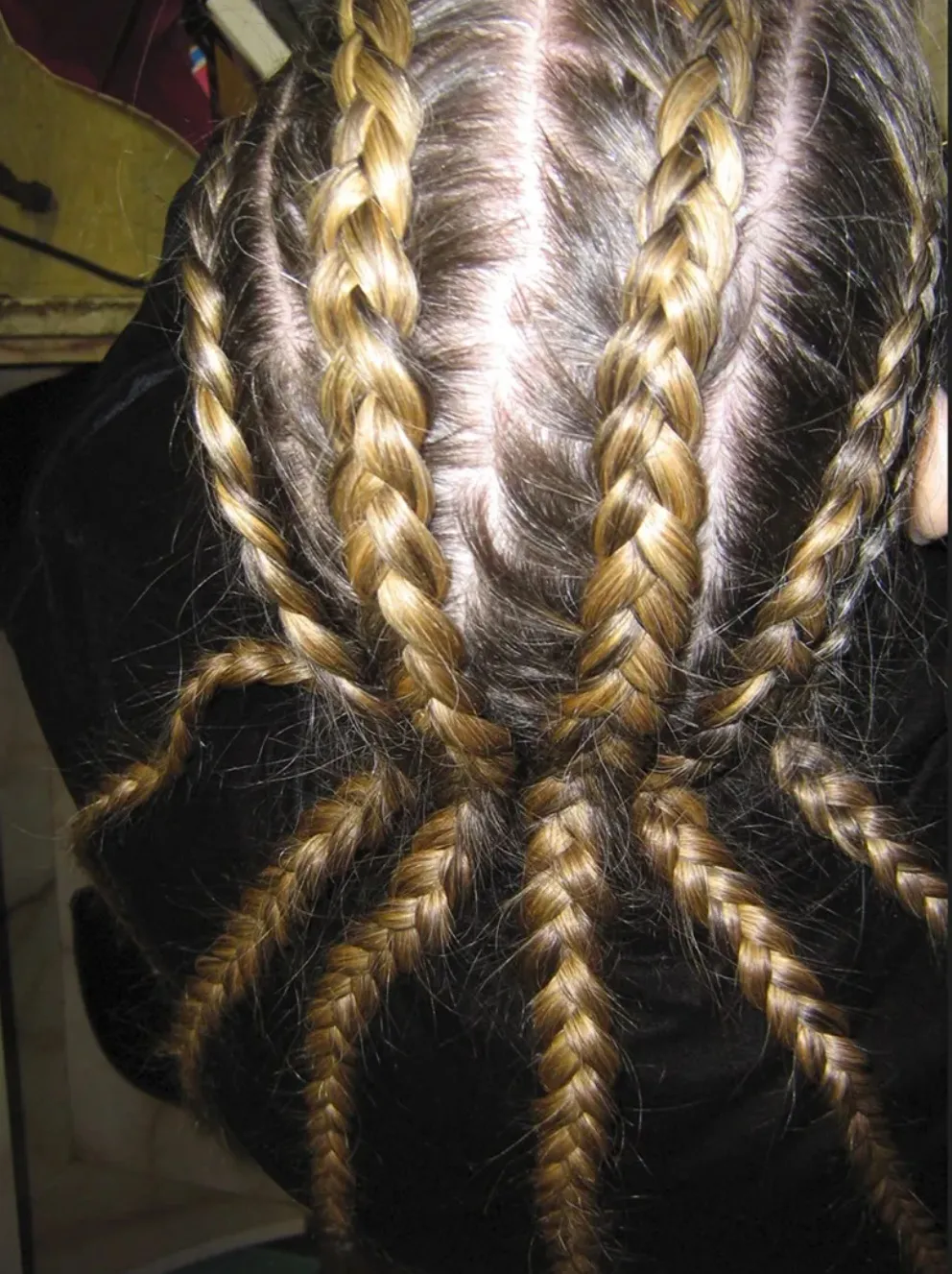
Do It Yourself Hair Extensions: Fusion Methods
IntroductionHair extensions have continued to skyrocket in popularity. Women, men, teens and even some children have turned to hair extensions for a wide variety of reasons ranging from extending the length of their tresses to adding volume to thinning locks. Whether you turn to a professional to apply your extensions or decide to Do It Yourself (DIY) at home, some of the key issues surrounding the topic of hair extensions includes the following: 1. The type of hair used - human hair, synthetic or a mixture. 2. Origin of the hair - European or Non-European. 3. Texture of the hair - straight, wavy or a mixture. 4. Type of hair - fine, coarse or a mixture. 5. Length of hair. 6. Color of hair. 7. How long the hair will last. 8. Fusion method or how the hair is applied to your own hair. This article deals specifically with fusion due to the fact that it can be confusing for many hair consumers to determine exactly what fusion methods are available, how the method plays into the expense of the extension and how feasible it is to use the fusion method in a DIY Installation. Although their are many talented people that can apply any type of hair extensions to their own heads using any of the fusion or connection methods, it is important to evaluate your own skill set before taking on a hair extension installation. Additional concerns about fusion method includes how easy the system is to find, how much they costs and what overall impact the fusion method will have on the natural hair. Professionals and DIY hair extensions consumers can use a wide range of fusion methods equally. Hair wefts can be attached or fused to the natural hair through the following key methods: 1. Weaving 2. Bonding 3. Microlinks Some of the most common methods of fusion, whether used by pros or DIYers include: Basic Weaving Methods1. Basic Cord Tracking - This method is also known as pinch weaving (which often refers to the Hair Police method), micro weaving, track locking or cord weaving. Other names may be used to refer to this method depending on a variety of factors. Thin tracks of hair are strategically placed in a horizontal pattern close to the scalp. The tracks of hair are stitched into a lock stitch with weaving thread. The tracks are carefully positioned to match the natural hair pattern. Advantages: This technique guarantees long lasting, tight hair extensions. Disadvantages: When woven too tightly, this method can place extreme stress on the scalp over a long period of time and can lead to a form of alopecia. This method works well with any hair that is chemically relaxed, treated permed or natural. Care should be taken to avoid undue stress on the hair and scalp. 2. Weaving/Sewing/Cornrowing - This method which is considered the oldest and most popular hair extension technique involves creating a series of small and tight horizontal braids or cornrows that lay flat against the scalp and usually extend from ear to ear and from the nape of the neck up the scalp. Once the braids are in place, a special needle is used to "sew" or "weave" the extension hair into the "tracks" which is what the braids look like. This is also known as Cornrow Tracking by some. Advantages: Weaving is a favorite method due to the fact that it holds the extension hair firmly in place and lasts for a very long time. Disadvantages: Although it is not impossible for a DIYer to sew in their own weaves, this fusion method would be quite challenging. One of the challenges would be the ability to create properly placed braids or cornrows. The other challenge would be the ability to achieve proper tightness when sewing in the hair against the cornrows. This fusion method would be most appropriate when used by a professional or when a hair extension savvy friend is able to help. Some people, after a lot of practice are able to create their own cornrows on their own head and sew in the extensions. However, the key word is lots of time and practice. When in doubt enlist a friend to help you. 3. Invisible/Tree Braiding - This method is designed to work with synthetic hair rather than other types of hair. This is a type of cornrow method that does not use thread or any type of glue. As the braids are created, the weave in hair is pulled away in very small sections from the natural hair. The natural hair is braided and supports all the hair that is woven into place. Disadvantages: Although these braids can be created quickly, the do not often last nearly as long as the other type of braids. Thus they must be re-braided more frequently. Bonding MethodsBonded hair additions use specially formulated adhesives to attach the hair. Adhesive bonding products are usually composed of wax, glue, Keratin or a combination of different bonding substances. Keratin based adhesive products are much harder than wax and come in different strengths using ranging from medium to hard hold. The wax based product (Fusion) comes in regular hold (Pro Fusion) and in medium hard hold (French Fusion). Fusion adhesives do not generally require acetone to remove and tend to be easier on the hair. With proper care, the French Fusion product can hold up to 3 months. Keratin adhesives are harder and can last up to 6 months. Thermal/Heat Bonding - This technique is also referred to as fusion or modulation. This technique is used to apply strand bonded extensions. The bonding material is a wax-like material formulated to withstand mild heat. A thermal heat appliance is used to melt the material. The adhesive quickly hardens into a firm but flexible bond. The adhesive is generally considered safe for all hair types. The bond must be removed with an appropriate heating appliance. Advantages: Thermal bonding adhesives resist softening from hair care products such as shampoo, conditioners and oils. Strand bonding is a favorite of many people both in the Professional and DIY industry. Individual strand bonding offers no bulk along the scalp leaving the hair to flow freely. Disadvantages: Since a thermal heat appliance is used for this method, it may be very challenging to do it yourself and may take the assistance of a hair savvy friend or professional. In additional, a heat device must be used to melt the bonds to remove the extensions. Glue/Adhesive Bonding/Fusion - Glue can be made from a variety of sources including keratin (which is the basic element of hair) or from other ingredients. Glue fusion systems can be categorized as hot or cold. Glue fusion can be achieved with glue, glue sticks or pre-bonded hair which means that the hair comes with the glue or fusion substance already attached. In the professional world fusion branded hair extensions are available from Great Lengths, SoCap, Cinderella and others. Strand Bond Weave Adhesives - Strands of hair are attached to the natural hair with specifically formulated hair adhesives. This method is used for long wearing extensions which can be worn up to 6 months. Cold Fusion - Cold fusion is a new method, and is meant to be more gentle for the hair. This method uses a keratin-based polymer to attach extensions to the root. As this method uses no heat, it is good for fine or thin hair. The polymer offers more flexibility than hot-glue, and results in more natural-feeling hair. For cold fusion hair extensions, many hairdressers may use SoCap extensions and a clear type of bond. These types of extensions can last up to six months. Advantages: Cold fusion is a new method, and is meant to be more gentle for the hair. This method uses a keratin-based polymer to attach extensions to the root. As this method uses no heat, it is good for fine or thin hair. The polymer offers more flexibility than hot-glue, and results in more natural-feeling hair. For cold fusion hair extensions, many hairdressers may use SoCap extensions and a clear type of bond. These types of extensions can last up to six months. Disadvantages: Some wearers of extensions created with either hot or cold glue fusion report that the hair has a feeling of "heaviness" or is less comfortable. Liquid Bonding/Cold Bonding - This is a liquid adhesive and comes in two types. One popular bond is Liquid Gold which is used for strong hold. The other type of adhesive is rubberized products which may be found in local beauty supply stores. The rubberized adhesives are meant for temporary extension lasting only a few days. The rubber adhesion products break down quickly and easily with natural hair oils and when washing using regular shampoo products. Dome Heat Sealing Fusion This method of fusion is used primarily on synthetic hair. The natural hair is first box braided. A heat clamp is used to seal synthetic hair onto itself . Disadvantages: This process can be quite complex to accomplish, and usually requires two people to handle the install. 3. Wax - As methods of fusion evolve, some fusion systems use a wax that is first melted and then pressed into the hair. Wax is similar to glue and is just a different form of adhesive mixture. Tape Sealing Method Used for many years to hold wigs and toupees in place, double sided tape is positioned against the scalp to hold the hair extensions securely in place. Tape is often combined with glue. This is referred to as seamless fusion. When done properly this type of fusion can last up to 8 weeks. This is when glue and tape are combined. Advantages: Tape is easy to use and can usually be applied by a new Do It Yourselfer. Disadvantages: One disadvantage to the tape/glue method is that the natural hair oils makes the tapes slip after so many weeks. It is considered less damaging than other methods of fusion. Clips/Claw Style Clips Clips - A variety of snap or pop down clips are used to snap the hair into place. Claw style clips - Used mainly for temporary clip-in hair extensions this not considered a permanent type of fusion method. MicroRings/MicroLinks Methods1. Tubes/Links - Tiny tubes or miniature links are attached to the ends of the extension hair and applied to the natural hair. The natural hair is pulled through the miniature link with a special type of needle. The extension hair is pulled through the link after the natural hair. The miniature link is then pressed tightly closed with a tool designed to close the links. This locks the extension hair into the links and holds them firmly in place without any type of heat or glue. The tool that is used to attach the hair is similar to a pliers. When applied properly the links lie flatly to the head. This method can be easily combined with other types of hair extensions. Advantages: One advantage to this method is that no glue, wax or heat is used to apply the extension hair. Many hair extension professionals believe this is less damaging to the natural hair. Disadvantages: This is also a method that would be difficult for someone to do to their own hair without assistance. Since the natural hair has to be carefully threaded with the extension hair, it is important to either have extensive practice or have someone help. 2. Silicone Rings - Silicone lined rings are used to attach the extension hair to the natural hair. Note: Check out the HairDo line of clip-in hair extensions. Also, check out the Jon Renau clip-in versions. The fusion method chosen would depend on a variety of factors including your budget, how long you wish to wear the extension hair, your lifestyle demands and the current condition of your hair. Some hair which is damaged, thinning or prone to breakage may not be as compatible with some types of hair extensions as others. If you goal is natural, long lasting hair extensions you should select a fusion method that is seamless and allows you to have extensions that are natural and indistinguishable from your own hair. Note: All of the products listed in this article including the entire René Furterer product lines are available at HairBoutique.com in the Marketplace. To talk more about Do-It-Yourself Hair Extensions or other hair extension information be sure to visit the HairBoutique.com HairTalk forum dedicated to hair extensions. |
| If you want to talk more about this or other hair care articles on HairBoutique.com or anywhere else, please post a message on HairBoutique.com's Hair Talk Forums.
|
Social Media Network Information
Please follow us on Twitter at: https://Twitter.com/HairBoutique. I look forward to meeting new people from all walks of Twitter and learning from their Tweets.

















